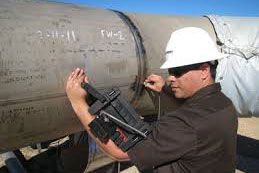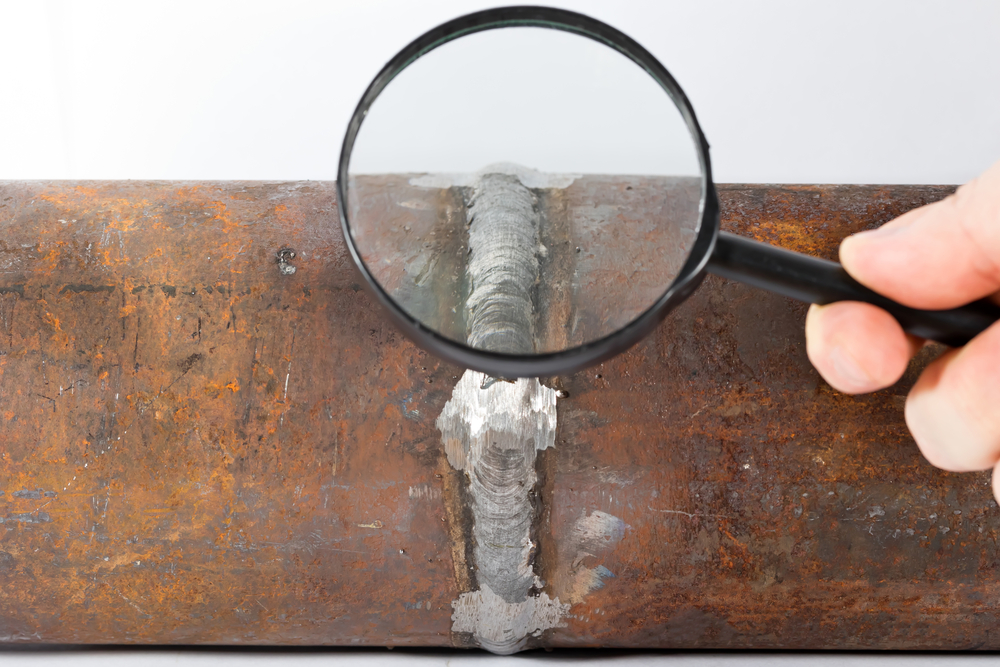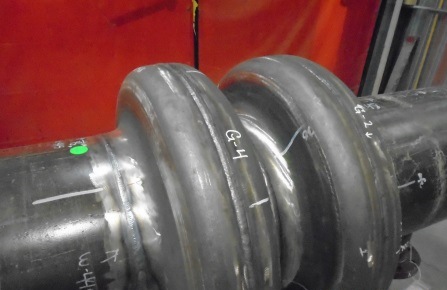Top Tips for Effective Welding Inspection in Gilbert Arizona: A Comprehensive Guide
Wiki Article
Discovering the Importance of Welding Examination in Industrial Applications: Safeguarding Versus Failures and Enhancing Durability
Welding assessment functions as an essential line of protection in industrial applications, making sure the architectural integrity and integrity of welded parts. By methodically identifying issues such as porosity and incomplete combination, evaluations not just avoid failures but additionally prolong the life expectancy of crucial assets. Following sector criteria enhances both security and operational effectiveness; however, the effects of disregarding these techniques can be extreme. As we examine the diverse benefits of normal assessments, it comes to be noticeable that comprehending these dynamics is not simply an issue of compliance however a strategic necessary for durability and danger mitigation (Welding Inspection Gilbert Arizona).
Function of Welding Inspection
Welding evaluation offers as a crucial secure in commercial applications, guaranteeing that welded frameworks satisfy defined standards of high quality and safety. This process involves a systematic examination of welds to verify their stability, toughness, and conformity with recognized codes and specifications. The duty of welding assessment is multifaceted, including both visual assessments and non-destructive screening techniques, which may consist of ultrasonic, radiographic, or magnetic bit screening.
Additionally, welding examination plays an essential role in regulative compliance. Many sectors are regulated by strict safety criteria, requiring comprehensive paperwork and validation of welding practices. By preserving these documents, companies can demonstrate adherence to security guidelines, consequently fostering count on among clients and stakeholders. Ultimately, the function of welding evaluation is essential in promoting security, improving performance, and protecting financial investments in industrial infrastructure.
Typical Welding Issues

Among the most prevalent problems is porosity, characterized by little gas pockets entraped within the weld metal. This occurs due to impurities or incorrect protecting gas, compromising the weld's strength. Another substantial problem is insufficient combination, where the weld metal fails to bond correctly with the base material, possibly bring about architectural weaknesses.
Splits can also create throughout or after the welding procedure, often credited to thermal anxieties or improper air conditioning prices. Furthermore, undercutting, where the base steel is worn down along the weld bead, can compromise the joint and is commonly triggered by too much warmth input or incorrect strategy.
In addition, lack of infiltration occurs when the weld metal does not get to the origin of the joint, causing insufficient strength. Comprehending these typical issues is critical for welders and examiners alike to ensure that welded structures meet security and performance standards, ultimately stopping prospective failures in commercial applications.
Benefits of Routine Evaluations
Normal inspections function as an important secure in making certain the dependability and long life of welded structures. These evaluations identify possible problems and weaknesses that might jeopardize the stability of welds, enabling for timely removal before problems intensify. By implementing an organized inspection regimen, companies can dramatically lower the danger of catastrophic failings that might result in pricey downtime, equipment substitute, or perhaps accidents.Furthermore, routine inspections add to enhanced high quality control throughout the welding process. By adhering to a consistent examination routine, firms can guarantee that their welding techniques fulfill established top quality benchmarks and best techniques. This not only cultivates a society of liability but likewise urges constant improvement among welding workers.
Furthermore, regular examinations promote far better upkeep more info here planning. By identifying deterioration early, organizations can purposefully arrange fixings and replacements, minimizing disruption to procedures. This positive strategy ultimately leads to prolonged possession life expectancy and improved overall performance.
Lastly, a commitment to routine assessments can improve a company's track record in the market. Clients and stakeholders significantly value organizations that prioritize safety and quality, consequently boosting trust fund and potentially bring about raised service chances.
Industry Standards and Laws
Following industry requirements and regulations is a basic facet of welding assessment that complements the benefits of normal evaluations. These you could try these out criteria, developed by companies such as the American Welding Society (AWS) and the American Society of Mechanical Engineers (ASME), supply a structure for best techniques in welding processes, products, and evaluation strategies. Conformity with these regulations makes certain that welds meet the required high quality and safety and security criteria, dramatically decreasing the danger of architectural failings.Regulative bodies like the Occupational Safety And Security and Wellness Administration (OSHA) even more impose standards that safeguard employees and the atmosphere throughout welding procedures. By adhering to these established requirements, industries can boost the dependability of their structures and components, ensuring they carry out as meant under numerous operational problems.
Additionally, adherence to sector standards promotes uniformity in high quality control, helping with smoother communication amongst stakeholders and regulatory agencies. This alignment not only minimizes obligation dangers but additionally enhances the trustworthiness of companies in affordable markets. Ultimately, conformity with welding standards and laws is not simply a lawful obligation; it is an essential investment in safety, performance, and long-lasting operational success.
Future Trends in Welding Evaluation
As industries remain to evolve, the future of welding evaluation is positioned to incorporate innovative technologies that boost accuracy and effectiveness. One of one of the most considerable trends is the fostering of automation and robotics in inspection processes. Automated systems can conduct assessments quickly, minimizing human error and raising throughput in manufacturing environments.Moreover, the integration of expert system (AI) and device knowing formulas will certainly enable predictive analytics, permitting for real-time evaluations and aggressive upkeep (Welding Inspection Gilbert Arizona). By analyzing information from previous assessments, these innovations can recognize patterns that can suggest potential failings, thus extending the life expectancy of welded elements

In addition, the fad in the direction of digitalization will certainly result in enhanced information management systems that promote much better tracking, reporting, and compliance with industry standards. In recap, the future of welding evaluation is defined by technical developments that promise to substantially improve dependability, security, and functional efficiency in numerous industrial applications.
Final Thought
In conclusion, welding evaluation offers an important function in guaranteeing the honesty and resilience of bonded frameworks across numerous commercial applications. As innovations in modern technology continue to develop, the future of welding assessment promises increased precision and effectiveness, inevitably contributing to the long life of important frameworks.Welding inspection serves as an important line of protection in industrial applications, making certain the structural honesty and integrity of welded elements.Welding inspection offers as a critical protect in industrial applications, making sure that welded structures fulfill defined criteria of high quality and security - Welding Inspection Gilbert Arizona. Ultimately, the duty of welding inspection is indispensable in promoting safety and security, boosting efficiency, and safeguarding financial investments in industrial infrastructure
These requirements, developed by organizations such as the American Welding Culture (AWS) and the American Society of Mechanical Designers (ASME), offer a framework for finest practices in welding processes, materials, and inspection techniques.In conclusion, welding examination serves a crucial function in ensuring the honesty and sturdiness of welded structures across various commercial applications.
Report this wiki page